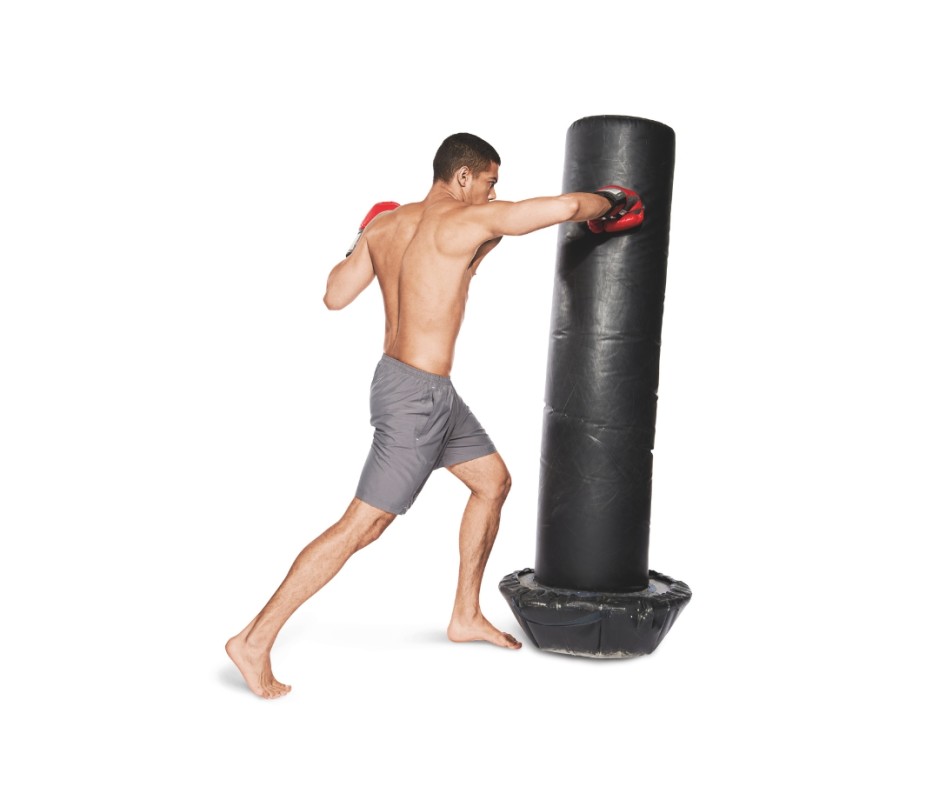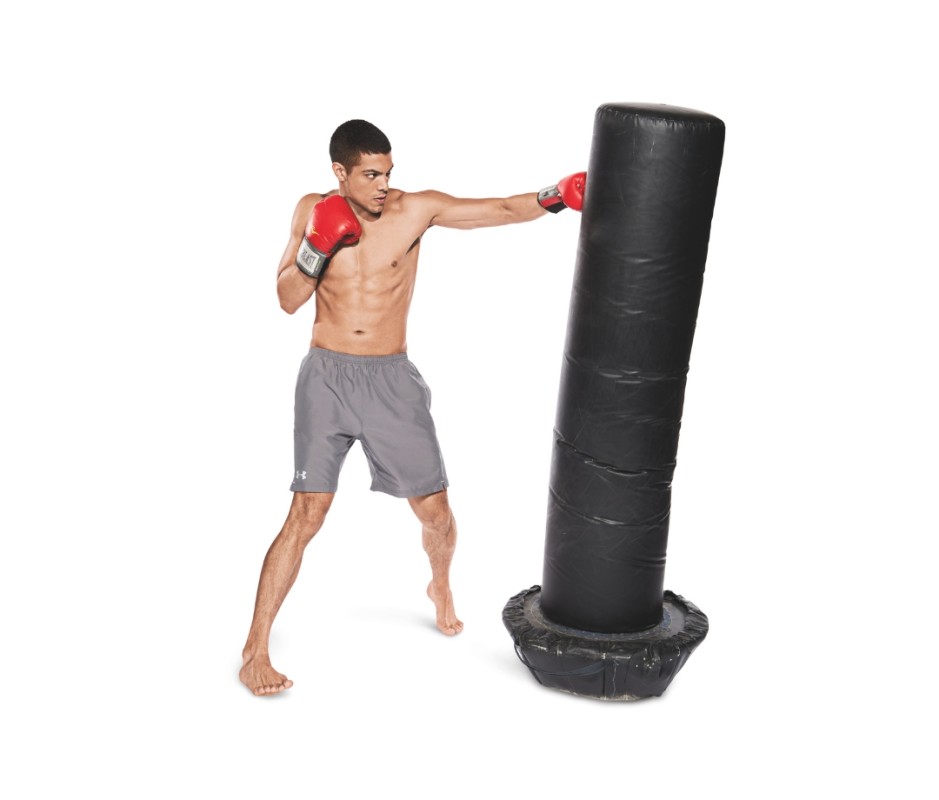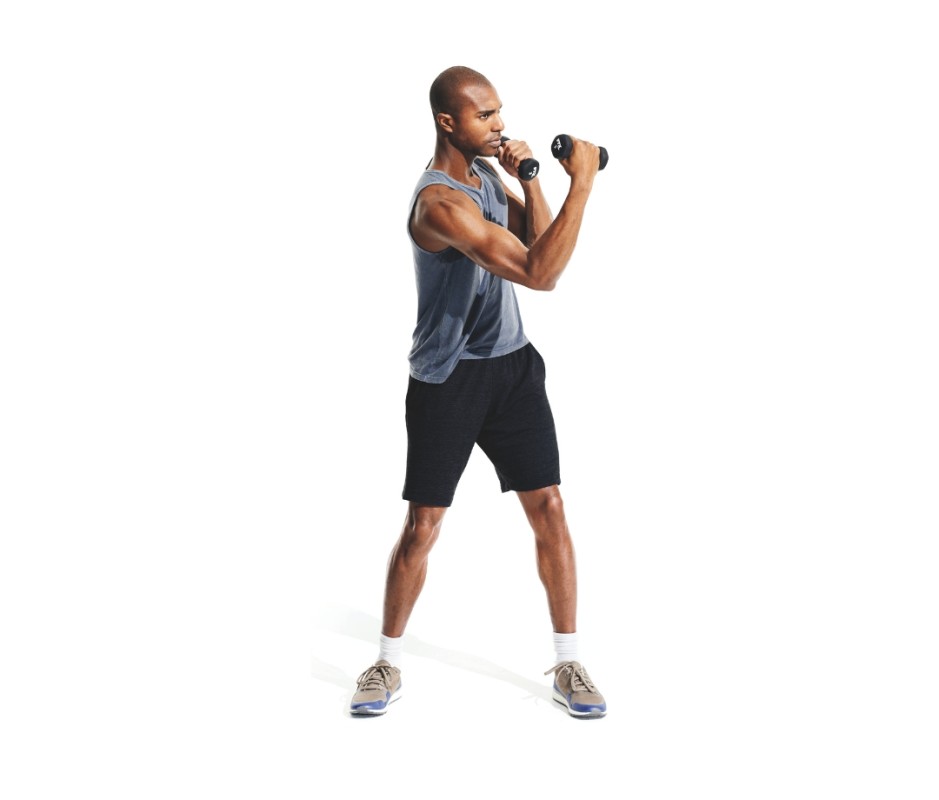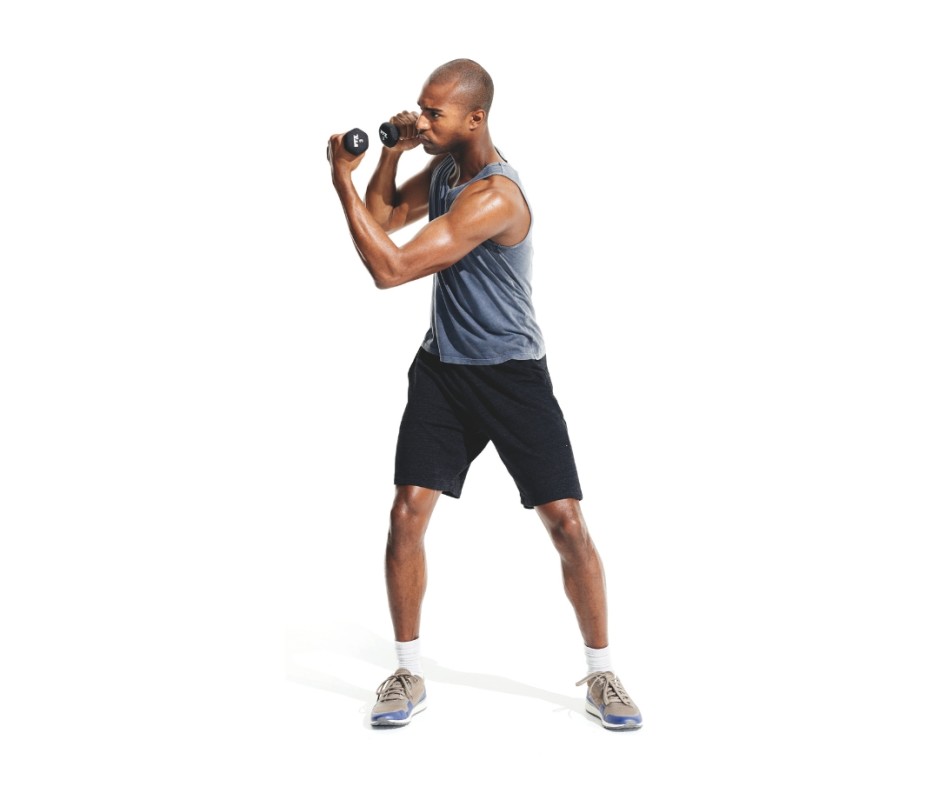Men's Health
How to Shadow Box to Lose Weight and Gain Muscle
The best boxers of all time—from Floyd Mayweather to Manny Pacquiao to Muhammad Ali—have different styles, but the one thing they have in common is a ripped physique. Unlike strength training or cardio for weight loss, which predominantly centers on gaining muscle and cutting fat, respectively, a boxing workout combines the two. One of the main components is shadow boxing.
The beauty of shadow boxing is you don’t have to invest in boxing gloves or spend time at your local UFC gym to get results.
“Boxing is one of the things professional athletes do that you can do in your home,” says boxing trainer Michael Olajide Jr., who’s trained athletes, actors, artists, and models. “It’s the same intensity and you’ll get the same benefits—nothing extra needed.”
Below, we break down all the need-to-knows of shadow boxing, including how to shadow box, its benefits, and the best shadow boxing workout from FightCamp Trainer and Hyperice ambassador Jess Evans.
What Is Shadow Boxing?
Shadow boxing is a type of boxing exercise where you practice all the traditional boxing moves in the air, as if there were an opponent, without actually hitting anything. While you may not get the same strength-training benefits as you would with a bag or a person, it’s a great weight-loss tool for those looking for an alternative form of cardio.
Benefits of Shadow Boxing
It’s a Good Precursor to Boxing
“It’s essential to know how to shadow box before you begin to hit a bag or boxing mitts so you can familiarize yourself with the movement,” Evans says.
By striking with proper technique in the air, you can build muscle memory before the added weight of gloves and pressure of an opponent.
Hones Your Technique
Shadow boxing helps perfect your form once you start sparring with a partner in the ring.
“Shadow boxing allows you to sharpen your boxing skills by visualizing an opponent with your shadow or reflection,” Evans adds.
It’s the Perfect Bodyweight Workout
No gym? On the road? Short on time? Shadow boxing is an effective workout that doesn’t require any equipment.
Shadow Boxing 101: How to Shadow Box
Shadow boxing might sound easy, but there’s more to the exercises than meets the eye. Sure, it doesn’t require any type of equipment, but there are specifics to boxing that are important to learn before you ever stand in the ring or face an opponent. To start, Evans suggests standing in front of a mirror to see your form and feel the movement in your body. Again, this is key for creating a mind-muscle connection.

James Michelfelder + Therese Sommerseth
1. Establish Your Stance
“If you’re right-hand dominant—known as an orthodox fighter—you’ll stand with your right foot back, slight bend in your knees, and your fists up, elbows in,” Evans says. “If you’re left-hand dominant, you’re known as a southpaw fighter, and you’ll stand with your left foot back with the same hand placement,” (aka protecting your face).
2. Know Your Punches
Boxing combinations use punch count numbers to make it easier for trainers to call out combinations with speed.
| Number | Punch |
|---|---|
|
1 |
Jab |
|
2 |
Cross |
|
3 |
Left Hook |
|
4 |
Right Hook |
|
5 |
Left Uppercut |
|
6 |
Right Uppercut |
Jab (1)
Jabs are done with your non-dominant hand. “It’s a fast punch to keep your opponent at bay and also helps judge your distance so you can land your power shot (aka cross), which is done with your dominant hand. “You want to snap this punch out with full extension, turning your knuckle over, then bring it right back to your temple,” Evans says.

James Michelfelder & Therese Sommerseth
How to Do It
- Stand with feet shoulder-width apart and knees slightly bent, to start.
- Square your shoulders to your hips and brace your abs.
- Hold your fists just under your chin.
- Throw a straight punch with your left hand.
- Pro tip: As you progress from just bodyweight, add light dumbbells to build muscular endurance.
Cross (2)
The 2, also known as the cross, is your dominant hand punch. “This is the punch your jab is setting up for,” Evans says. “As you throw your cross, slightly pivot on the ball of your rear foot while you turn your knuckles over.” Your punch should land at full extension of your arm.

How to Do It
- Start with a boxing stance, with your feet shoulder-width apart and your hands up at your face.
- With your rear hand punch in a straight line as you pivot from the rear foot, rotating the hips forcefully as your body weight shifts toward the front foot.
- Right before your arm is fully straight pivot your wrist until your palm is facing down.
Hooks (3-4)
Punches 3 and 4 are known as your lead and rear hook. These are punches that come around the side of the head or body, arm bent at a 90-degree angle, with a tight frame, elbow high in alignment with your shoulder, Evans says. You’ll turn your body into this punch. “The leg and arm move in synchronization to gain power from the ground up through the arm.”
Lead Hook

Beth Bischoff
How to Do It
- To start, stand with your feet shoulder-width apart and your hands up at your face.
- Put your weight on your rear leg and pivot your right foot while you bring your lead arm toward the target, making sure your elbow is bent at 90 degrees.
- Turn your hips into the punch.
Rear Hook

Beth Bischoff
How to Do It
- To start, stand with your feet shoulder-width apart and your hands up at your face.
- Put your weight on your rear leg and pivot that same foot while you bring your rear arm toward the target, making sure your elbow is bent at 90 degrees.
- Turn your hips into the punch.
Uppercuts (5-6)
Numbers 5 and 6 are lead and rear uppercuts. “These are scooping uppercuts that come straight up the center, usually aimed at the chin,” adds Evans. “These punches have your knuckles facing you as you power through your legs and lift up into the punch. As you lift up into the punch, your same side heels come with it to help create more power.”
Lead Uppercut

James Michelfelder & Therese Sommerseth
How to Do It
- Stand with your feet shoulder-width apart and your hands up at your face, to start.
- Shift your weight onto your back foot and keep your front foot firmly planted.
- Keeping your arm slightly bent at the elbow, drive your lead fist upwards in a smooth, controlled motion.
- Make sure your hips are rotating in the same direction as the uppercut.
Rear Uppercut

James Michelfelder & Therese Sommerseth
How to Do It
- To start, stand with your feet shoulder-width apart and your hands up at your face.
- Shift your weight onto your back foot and keep your front foot firmly planted.
- Keeping your arm slightly bent at the elbow, drive your rear fist upward in a smooth, controlled motion.
- Make sure your hips are rotating in the same direction as the uppercut.
3. Build Your Combos
“Once you know all your punches and throw them well singularly, start to build combinations: jab-cross; jab-cross-hook; cross-hook-cross, etc.,” Evans says. “I recommend trying these stationary in the mirror until you feel strong in your stance and your technique feels good.”
4. Find Your Footwork
Once you feel strong in your stance, know your punches, and can build combos, it’s time to add some movement via footwork. “You need to be able to move around effectively, then plant your feet and throw your single shots or combos,” Evans says. “Start by moving forward and backward, then once you feel good with that, start moving laterally. Make sure you step with your inside leg so your feet don’t cross. You can also start to add some defensive moves like slips and rolls.
Slips are a simple dodge where you move your head across your center line to avoid a punch, while rolls are a pendulum-like maneuver where you move your torso from one side to the other.
Shadow Boxing Warmup
“In many ways, shadow boxing is used as a warmup for fighters, but for people who want to use shadow boxing as their main workout, always start with a dynamic warmup,” Evans suggests.
Just like with any type of workout, you always want to make sure you warm up to get your blood flowing and muscles ready. While every person’s warmup might look a little bit different, Evans suggests doing movements that are specific to the boxing movements you’ll perform in your workout such as:
- gate openers
- torso twists
- lateral lunges
- runners lunges
“I also like to use Normatec Leg Compression Sleeves to get some blood circulation about 45 minutes before my exercise, or the Hyperice Vibrating Therapy Ball to roll my feet out. It’s important to have strong feet because boxing starts from the ground up!”
Best Shadow Boxing Workout
When it comes to building a shadow boxing workout, it’s best done in the form of a combo buildup, where you build up the combos and the intensity as well. Below is an example of a 15-minute shadow boxing workout.
Round 1
- Jab x 30 sec.
- Cross x 30 sec.
- Lead Hook x 30 sec.
- Rear Hook x 30 sec.
- Lead Uppercut x 30 sec.
- Rear Uppercut x 30 sec.
Rest 1 min. then begin round 2.
Round 2
- Jab-Cross x 30 sec.
- Lead Hook-Rear Hook x 30 sec.
- Jab-Cross x 30 sec. non-stop
- Lead Uppercut-Rear Uppercut x 30 sec.
- Uppercuts x 30 sec. non-stop
- Jab-Cross x 30 sec. non-stop as fast as you can to burnout
Rest 1 min. then begin round 3.
Round 3
- Jab-Jab-Cross x 30 sec.
- Slip-Slip x 30 sec.
- Cross-Hook-Cross x 30 sec.
- Roll-Roll x 30 sec.
- Hook-Cross-Hook x 30 sec.
- Uppercut Burnouts (Non-stop punches) x 30 sec.
Rest 1 min. then begin round 4.
Round 4
- Jab-Cross-Slip x 30 sec.
- Jab-Cross x 30 sec. non-stop
- Cross-Hook-Cross-Roll x 30 sec.
- Uppercut x 30 sec. non-stop
- Hook-Cross-Hook-Roll
- Freestyle Burnout x 30 sec. non-stop as fast as you can to burnout






